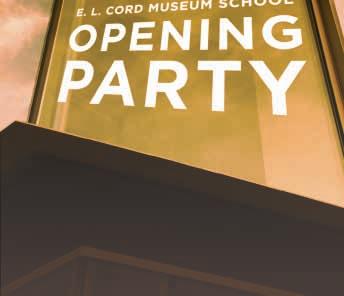
8 minute read
News
from Dec. 11, 2014
English language musked
A news release distribution service called Wall Street PR has issued a release for Tesla that takes the practice of converting nouns into verbs a step further.
Advertisement
The release quotes Tesla CEO Elon Musk defending the corporation from accusations that he exploited Nevada’s hard times to get a good deal for his massive battery plant that will be built 17 miles east of Sparks in Storey County.
“Musk has rubbished allegations that he received cash from the state but acknowledged the company did receive a parcel of land from the state,” the release read.
“The CEO has also rubbished suggestions that the state didn’t right [sic] the giant electric company a blank check.”
Musk’s corporate blog carried an essay under his byline, headlined “The House Always Wins,” making the case that Nevada, not Tesla, came out on top—though in real life, it’s probably Tesla, not Nevada, that is the house.
“Nevada is the entertainment capital of the world, home to the most sophisticated casinos on Earth,” Musk wrote. “As everyone knows, the money to build those resorts arises because the casino houses generally tend not to lose.”
Several publications, including the Washington Post and Fortune, have published in-depth reports on Musk’s manipulating state governments to ratchet up the corporate welfare he was able to harvest by playing their officials off against each other while his celebrity mystique shielded Tesla from rigorous scrutiny.
Nevada won the factory with an incentives package crafted by the Sandoval administration. Estimates of its cost are all over the map, but the most commonly cited one says the state will ultimately pay $200,000 for each job generated.
This week, local Washoe governments heard from agency heads that Tesla’s arrival will force acceleration of expansion or improvements of infrastructure like the sewage treatment plant. In addition, they were told that only importation will provide all the needed water for the region when Tesla is operating fully.
The Fortune article can be read at http://tinyurl.com/nmx8fmw. The Musk essay is at www.teslamotors.com/blog/house-alwayswins.
State adjudged violent
Using the data compiled by the Federal Bureau of Investigation, a financial website called The Street produced a list of the most violent states in the nation. Nevada ranked third.
The Nevada figures are as follows:
Total violent crime rate (per 100,000 residents): 607.6 Murder and non-negligent manslaughter rate: 4.5 Forcible rape rate: 33.7 Robbery rate: 178.3 Aggravated assault rate: 391.1 Total population: 2,758,931
The data for the FBI reports are submitted by local law enforcement agencies, either through a central state repository in most states, or directly to the FBI in a few states. Nevada is in the first category.
Local agencies are not required to participate, and some do not, so the figures are not regarded as exhaustive. In the most recent annual report, for 2013, the FBI said it received statistics from 6,115 law enforcement agencies out of 18,290 total police agencies participating (or not participating) in the reporting program.
In addition, localities may be reluctant to report some types of statistics that do not put law enforcement in a good light. Politifact, the Pulitzer Prize-winning fact checking site, reported this week, “There is no mandate that local law enforcement agencies report officer involved shootings to the FBI. While 18,000 city, university, county, state, tribal and federal law enforcement agencies voluntarily participate in the FBI’s annual Uniform Crime Report, just a small fraction of them willingly provide data on deadly force and justifiable homicides within their departments. “ Sen. Richard Segerblom has legislation in preparation to raise the minimum wage, but it will be a drawn-out process.
Very minimum
Nevada Legislature will consider steps toward $15 minimum wages in the state
With Congress unable to function, states and municipalities in growing numbers have been preempting the federal by government on the minimum wage. Dennis Myers In real dollar value, the current federal minimum wage—$7.25—is lower than it was during most of the 1960s and ’70s. Last month voters in Alaska, Arkansas, Nebraska and South Dakota increased their states’ minimum wages—though none proposed minimums as high as $10. Illinoisans voted for a non-binding $10 wage and San Francisco voters went to $15.
Jim Clark Lake Tahoe Republican columnist
Last week, the Multnomah County Board of Commissioners in Oregon voted to gradually increase the minimum wage from $11.99 to $15.
Though overshadowed by police killings protests, workers in more than a hundred cities last week demonstrated for $15 minimums.
In Nevada, Clark County Sen. Richard “Tick” Segerblom, a Democrat, will sponsor a constitutional amendment—a step toward a $15 minimum—in the legislative session that begins Feb. 2. Nevada’s current minimum wage is $8.25, or $7.25 for workers with employer-provided health insurance.
Nevada Republican figure Jim Clark wrote in the North Lake Tahoe Bonanza, “If, as Segerblom proposes, Nevada passes a law more than doubling the minimum wage, a lot of low skill workers will lose their jobs, many replaced by automation. ... The effect on all of us would include cost-push inflationary pressures, making it cheaper to go to Kings Beach [across the state line in California] for a burger.”
However, the minimum wage in California has been 75 cents higher than Nevada without causing any land rush to Nevada burger joints at the lake.
In October, Mike Konczal and Bryce Covert at the Nation magazine, using statistics from the U.S. Bureau of Labor Statistics, looked at 13 states that increased the minimum wage on January 1, 2014. Twelve of them subsequently experienced increases in employment. One—New Jersey—experienced a 0.56 percent job loss.
“Real-world evidence is reassuring,” Konczal and Covert wrote. “In 2010, three economists looked at 1,381 counties over 16 years, finding that minimum-wage hikes had no effect on employment. Other economists looked at every state-level minimum-wage increase over 25 years at times when unemployment was already high and found no evidence of an effect on job creation. Yet another group looked at the effect of state-level increases on teenagers—canaries in the coal mine of low-skilled employment—and found zero impact on their jobs.”
Long process
Las Vegas Mayor Carolyn Goodman has signed a U.S. Conference of Mayors petition calling for a $10.10 an hour wage. In October, Vice President Joseph Biden visited her city to promote awareness of the problem.
During that visit, a restaurant industry front group claimed the $10.10 minimum would cost Nevada $5,300 jobs.
Segerblom’s measure would require amending the state constitution, meaning another public vote. The public vote is not likely to offer much of an obstacle, but getting the amendment through the legislature is another matter. It would have to pass two legislative sessions, in 2015 and 2017, before going before the voters.
In 2006, Nevadans voted 68.71 to 31.29 percent to set the state minimum wage a dollar above the national minimum wage. Nevada is also one of seven states requiring the minimum wage for tipped workers.
In April this year, Segerblom was still promoting—in a Las Vegas Review-Journal essay—a $10.10 minimum for Nevada. But by August, when he filed his request for a constitutional amendment with the legislative bill drafting office, he had raised his sights to $15. Efforts around the nation to raise the minimum were coalescing around that figure.
“Two things,” he says now. “First, after I wrote the article $15 appeared to be the new $10.10, and second, it’s always good to aim high and leave room to negotiate.”
Though the 2014 Nevada Republican Party platform made no mention—positive or negative—of the minimum wage, with new Republican majorities in both houses of the legislature, an effort to hike it could face substantial opposition. It is a longstanding GOP shibboleth that minimum
wages hurt business without aiding workers.
Segerblom argues that even at the higher, $8.25 rate, “a full-time minimum wage worker makes only $17,160 per year, or $330 per week. This is not enough to secure the basic necessities of life—rent, food, medical care and child care—for even a small family. ... How do these families get by? Often they have to rely on private charity or public welfare.”
No one thinks the patchwork efforts at state and local levels are a particularly good idea, but dysfunction in the U.S. Senate has caused stagnation of wages. At the federal level, the Senate was unable to act on the minimum wage this year because of the “silent filibuster” obstacle that has overturned majority rule in that house in recent years, allowing minorities to block action by routinely requiring supermajorities. The most Democrats were able to muster to increase the minimum was 55 votes in the 100-member Senate. Ω

Second chance




In the photo at top, taken with a drone camera by Donald Abbott, “Last Chance Joe” is seen at new location on the night he was moved from the Sparks Nugget to the Sparks Heritage Museum (See 15 Minutes, page 43). The Nugget’s new owners decided to get rid of Joe, and he seemed destined for disposal until an anonymous donor ponied up the money to move the three-ton statue the two blocks. The character of Joe was created for the Last Chance Café in Garden City, Idaho, by Roscoe “Duke” Reading of Boise on a commission from the café owner, Dick Graves, who later founded the Nugget. In the photo at bottom, museum volunteer Richard Simmonds chatted with worker Chuck Ivey, who was working on the pedestal that serves as the new location for the 36-foot-tall Joe. Saturday, December 13 | 10 am - 6 pm Join us to celebrate the newly remodeled E. L. Cord Museum School. Meet faculty, do hands-on art projects, and experience class demonstrations. Lunch at chez louie or grab a bite from local food trucks. All visitors will enjoy FREE museum admission, discounts on upcoming classes, and storytelling in the galleries. Free Admission
MUSEUM STORE: Holiday Pop-Up
Saturday, December 13 | noon - 3 pm Enjoy this personal shopping experience featuring two local designers with international reach. Textile artist Casey D. Sibley creates handmade home goods and accessories in a happy modern style. Karen Hancock makes metal jewelry from copper, brass, and sterling silver. Both claim nature’s rhythms and organic simplicity as inspiration. #shopartfully
Donald W. Reynolds Center for the Visual Arts | E. L. Wiegand Gallery 160 West Liberty Street in downtown Reno | 775.329.3333 | nevadaart.org










